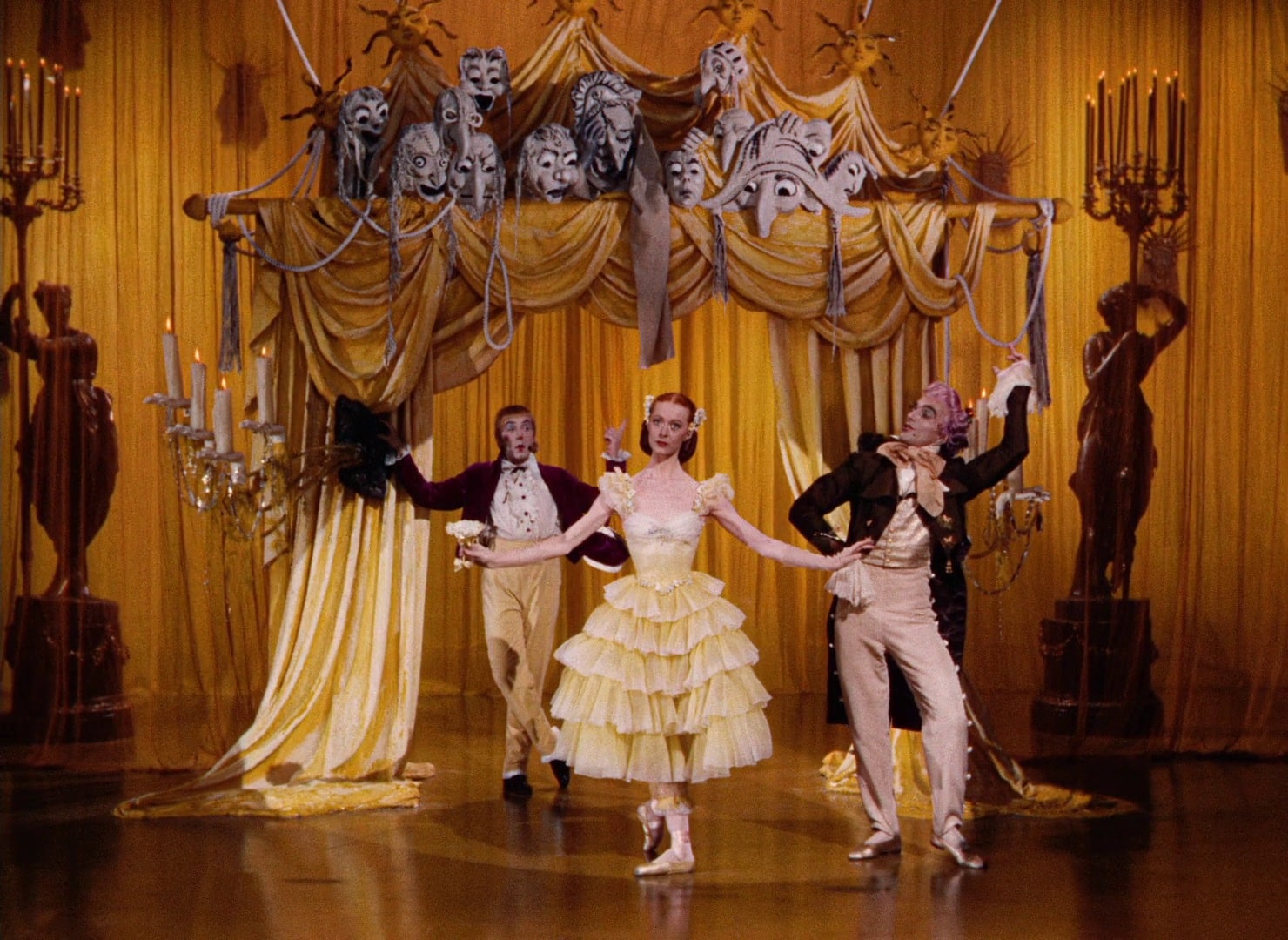The Tales of Hoffmann (1951) is a British Technicolor comic opera film written, produced, and directed by Michael Powell and Emeric Pressburger. Adapted from Jacques Offenbach’s opera, the film is a visually striking exploration of the human psyche through the lens of operatic narrative. It presents three tragic love stories that function as fragmented reflections of the protagonist’s psyche. From a psychological standpoint, The Tales of Hoffmann also delves into the archetypes of the femme fatale, the obsessive lover, and the tragic hero. Hoffmann’s romantic obsessions are doomed by their nature as well as by his projections: each woman embodies an aspect of his psyche, representing an idealised, unattainable facet of his longing and different aspects of his desires and vulnerabilities.
His first love, Olympia, is a lifelike automaton, symbolising his naive infatuation with an illusion. Her mechanical nature represents his inability to separate fantasy from reality, reflecting his tendency to project his emotional needs onto a constructed image of perfection. The fact that Olympia is not real, but rather an object of artifice, signifies Hoffmann’s susceptibility to becoming entranced by superficial beauty, unable to confront the deeper complexities of true human connection.
The second woman, Giulietta, is a seductive courtesan whose charm leads Hoffmann into the trap of carnal temptation. Giulietta’s manipulation of Hoffmann is a metaphor for the destructive nature of indulgence and the loss of self-identity in the pursuit of physical pleasure. In the pivotal moment of their affair, Giulietta convinces Hoffmann to surrender his own reflection, symbolising the dangerous act of giving up one’s essence in exchange for fleeting gratification. Her presence exposes the psychological peril of prioritising external desires over internal authenticity, leaving Hoffmann more hollow and disconnected from his true self.
The final woman in Hoffmann’s tragic love trilogy is Antonia, a delicate singer whose passion for music ultimately leads to her downfall. Unlike the other two, Antonia’s love is rooted in a deeply emotional connection, but it is tainted by her frailty and the sinister forces that prey upon her vulnerability. Antonia’s talent becomes both her gift and her curse; it consumes her, manipulated by dark influences that push her toward self-destruction. Her fate reflects the psychological tension between personal ambition and the destructive toll of artistic passion, showing how Hoffmann’s love for her mirrors his own internal struggle with obsession and the fear of losing oneself to a singular, overpowering desire. Each of these women embodies an aspect of Hoffmann’s psyche, portraying the varying dangers of love and obsession and the emotional consequences of surrendering to illusions.
The film’s highly stylised aesthetic, with its theatrical sets and surreal colour palettes, externalises his internal conflicts, blurring the line between fantasy and reality. This deliberate artificiality emphasises how perception is shaped by the illusions we create for ourselves. Throughout the film, the poet’s obsession with love and his recurring disillusionments represent a psychological study of idealisation and the fragility of human desire. His inability to reconcile fantasy with reality creates a poignant tension, showcasing the psychological struggle between personal aspiration and the painful recognition of impermanence. The repetition of these patterns in Hoffmann’s relationships reflects a cyclical psychological process of hope, betrayal, and despair, inviting the viewer to reflect on the darker sides of romantic obsession.
The psychological complexity of The Tales of Hoffmann is further enhanced through its use of opera as a vehicle for heightened emotional expression. The operatic nature of the film allows characters to embody both psychological archetypes and emotional extremes, giving a voice to Hoffmann’s inner conflicts. In this heightened emotional landscape, the psychological torment of Hoffmann is portrayed through his actions as well as through his shifting perception of the women he encounters, reflecting his struggles with love and identity. His relationships are tragic, not because of the women themselves, but because of Hoffmann’s projection of his desires and flaws onto them. The film’s dreamlike sequences suggest that Hoffmann’s journey through these fantastical tales is a metaphorical exploration of the mind’s tendency to distort, idealise, and ultimately suffer through its own internalised struggles.







